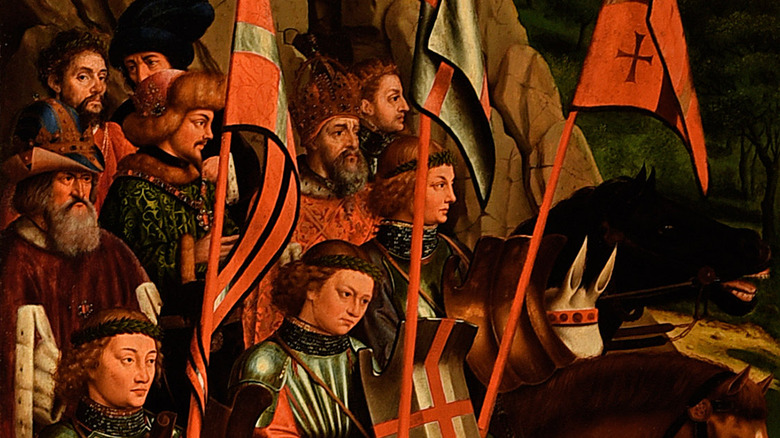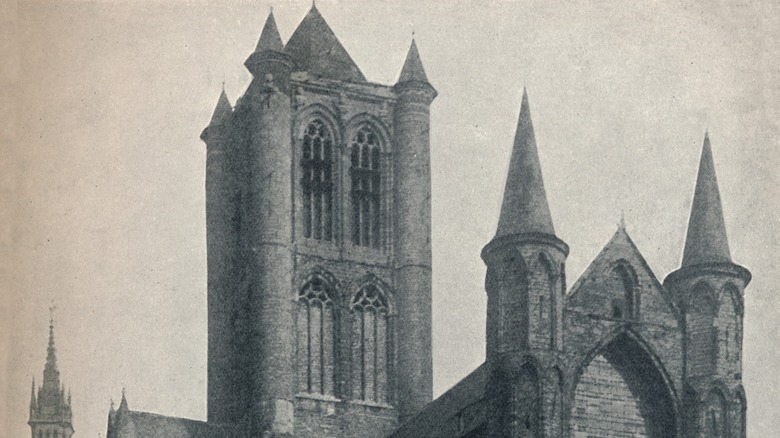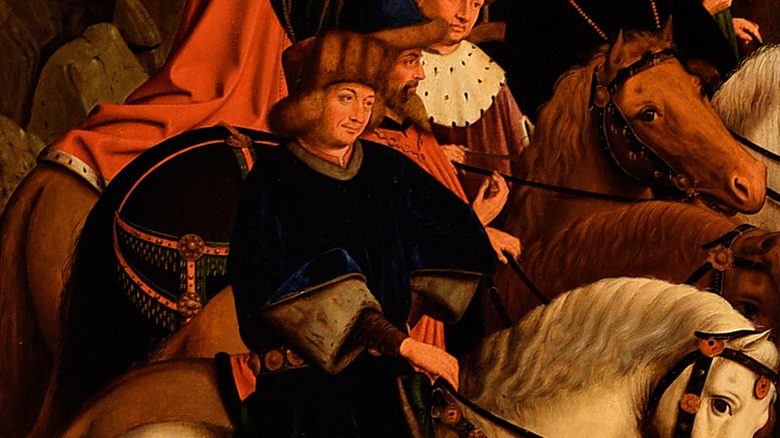The History Behind The Stolen Just Judges Panel From The Ghent Altarpiece
The tale of Jan van Eyck's 15th century "Ghent Altarpiece" painting is like something straight out of the "The Da Vinci Code." The most famous artwork in Europe at the time of its completion in 1432, the "Ghent Altarpiece," also known as "The Adoration of the Mystic Lamb," quickly became one of the most sought after paintings in the world, coveted by everyone from Napoleon to Adolf Hitler. It was so admired, in fact, that the "Ghent Altarpiece" was subject to 13 different crimes and stolen six times, according to The Art Newspaper.
In April 1934, two of the painting's 12 panels were stolen in Belgium, opening up a police file that would go on to become more than 2,000 pages. Still not solved to this day, the case has unfolded to be one of the greatest mysteries in the art world, with new clues popping up all the time (per The Guardian).
Here's what happened that April night
When the painting was reported stolen from the St. Bavo Cathedral in Belgium, the Ghent policy commissioner, Antoine Luysterborghs, reportedly overlooked the theft since the painting had already been carried off and returned a number of times before. Instead, he prioritized another report that came in at the same time from a neighboring cheese shop (per The Guardian).
The alleged cheese thief from the neighboring shop ironically became a witness in the stolen panel case, claiming he saw two people leaving the cathedral the night of the theft with a black package about the size of the missing painting, according to The Art Newspaper. But since the witness was a thief himself, the police looked elsewhere for clues.
Later that night, one of the two stolen panels depicting Saint John the Baptist was discovered in a suitcase left at the Ghent train station, along with a note demanding one million Belgian francs as a ransom in exchange for the other panel. However, the location of the so-called Just Judges panel, depicting a group of men on horseback called the "Righteous Judges," remained unknown.
The prime suspect
Years later, a stockbroker named Arsène Goedertier called for his lawyer on his deathbed after collapsing from a heart attack at a Catholic political rally. There, Goedertier directed his lawyer towards a series notes near his bedside, where he found a mysterious clue about where the missing panel was. Per The Guardian, he said "[It] rests in a place where neither I, nor anybody else, can take it away without arousing the attention of the public." Goedertier went on to became the Ghent police's prime suspect, but without understanding his motive, the case went cold.
Some believed Goedertier was working with other members of the church to steal the panel in an attempt to win back enough money to cover up a failed investment scheme. However, Karel Mortier, a now-retired police chief who remains the most dedicated investigator of the case, discovered that Goedertier had more than a million francs in his bank account and probably wouldn't need the ransom money (via The Guardian).
In collaboration with a private investigator hired by Adolf Hitler (who wanted the stolen panel for himself), Mortier discovered unreported statements from Goedertier, like "What is misplaced is not stolen," which he took to mean the lost panel may be hidden within the cathedral or other Catholic church facilities. But a search of some 350 sites has thus far failed to turn up the mysterious lost Judges panel, continuing to tantalize conspiracy theorists and art fanatics around the world.


